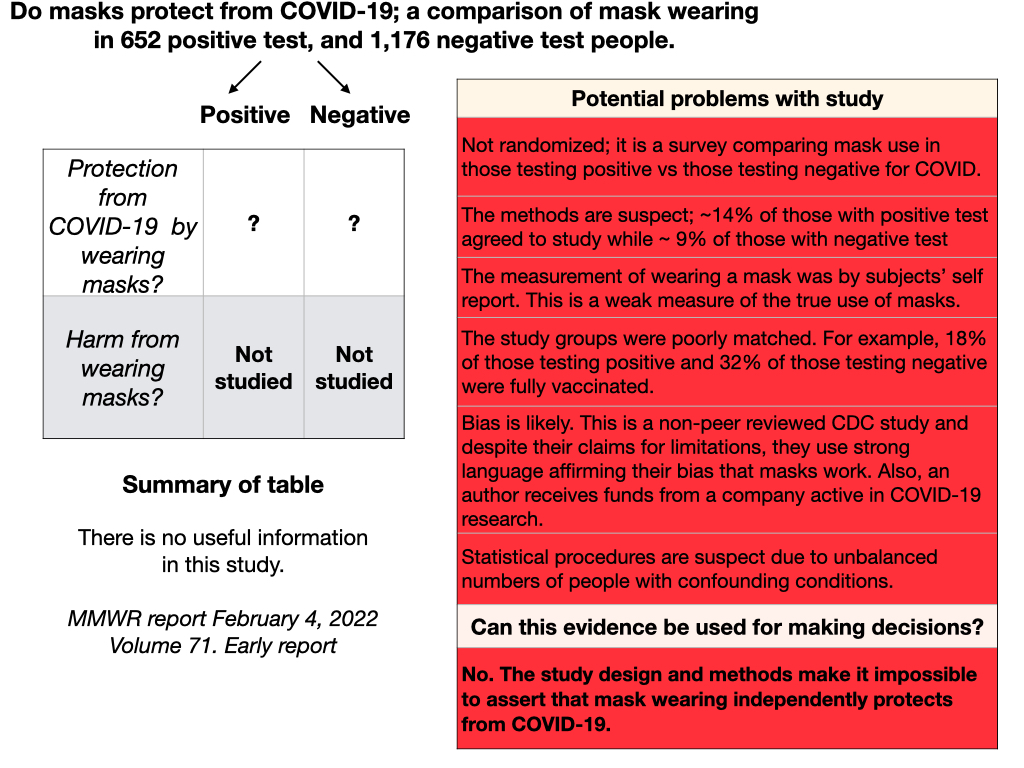A report from the CDC in MMWR (Morbidity and Mortality Weekly Report) on February 4, Volume 71, examined if wearing a mask protects from getting COVID-19. The study design is a case-control study. Cases were people who tested positive for COVID-19 and the comparison group was those who tested negative for COVID-19. These subjects were asked about their use of masks. The report claims that wearing a mask protects from COVID-19.
This assertion is not correct based on this study. The reason for it being incorrect is that the study design is not one in which an independent contribution of mask wearing can be determined. All clinical research should aim to find that some intervention for care, in this case, wearing a mask, independently, or in addition to other interventions, adds to our care. To assure the independent value of an intervention, all other factors that may influence the outcome of interest, getting COVID-19, must be balanced.
Balancing other factors, called confounding factors, is crucial in clinical research. If, for example, wearing or not wearing a mask is associated with being vaccinated, or with social distancing, or with having more means for care, AND all of these factors are also associated with the outcome of interest, in this case getting COVID-19, then the independent contribution of just wearing a mask is impossible.
The authors assert that their study, “in addition to being up to date with recommended COVID-19 vaccinations, consistently wearing face masks or respirators while in indoor public settings protects against the acquisition of SARS-CoV-2 infection”. These are words that can be confused with causation thinking, they “protect”. But, this study can’t say that.
The best place to see the imbalance of potential other factors that may influence the outcome of a study other than the intervention being tested is in, “Table 1” of a study. Table 1 is a key table; it shows the balance of confounding factors. In this study there are many imbalances. For example, 18% of people testing positive for COVID-19 were fully vaccinated, but in the negative test group, 32% were. Part of the reason for the imbalance is that this is a survey study and people did not agree to be in the study in equal proportions in the test positive and test negative groups. About 14% of those invited to study accepted in the test positive group, but only 9% in the test negative group. In addition, such a small response rate for a study means the results, no matter what they are, cannot be generalized to any other group of people, making the study unhelpful.
My assessment of this paper is not a general assessment of the value of masks. This paper can’t support that assertion, however.



Unfaortunately, we tend to believe what is in print, especially from authoritative sources. You’ve torn this study apart and exposed if for what it really is – unscientific trash. Its purpose has been served, however, i.e. to promote and support government financed CDC mandates.
Ronald F Cheff, MD
Hinsdale, Il